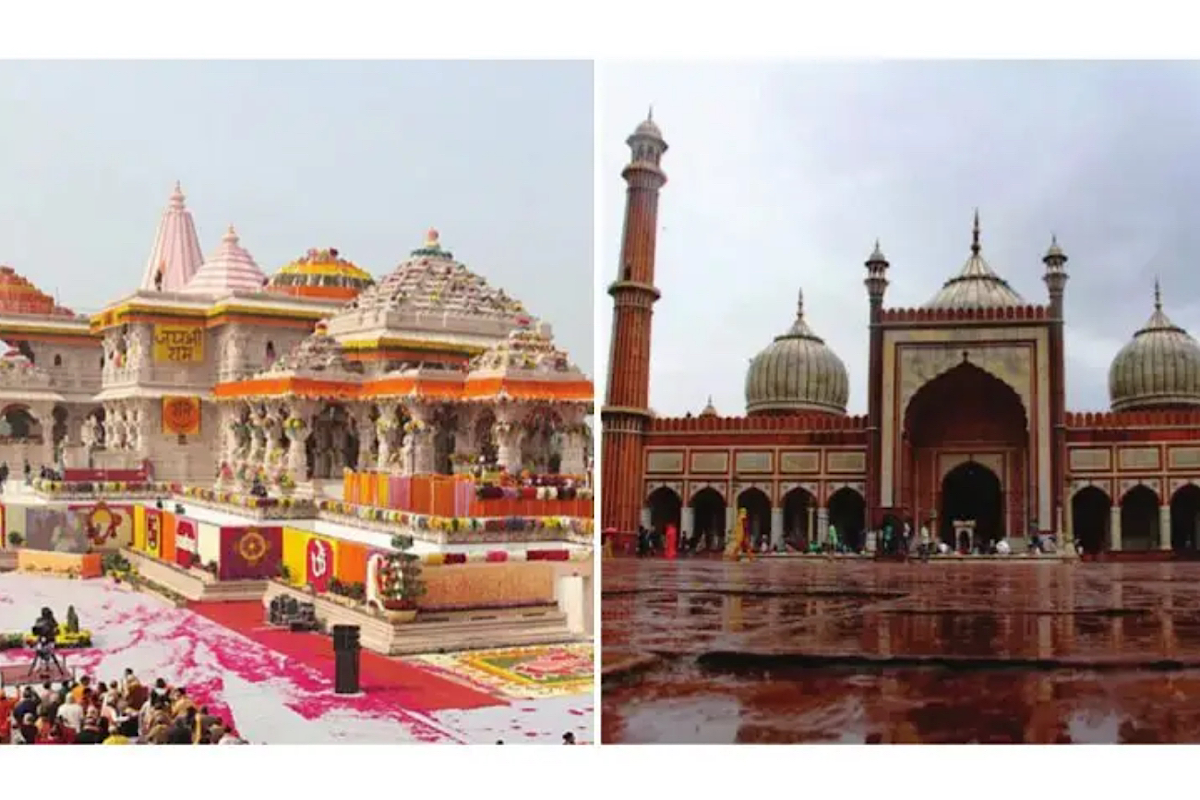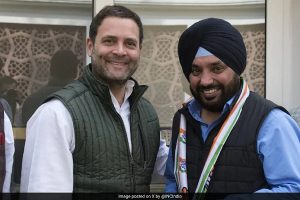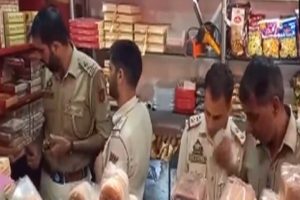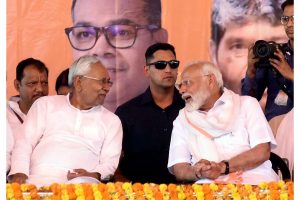On all places of religious worship, I have a fundamentalist view that religion being essentially a private matter, temples and churches and mosques should be universally converted into community centres for everybody’s use. But a colleague’s remark that “ignoring a problem would not make the problem disappear” made me reflect seriously on Ayodhya, Varanasi and Mathura. In his collection of essays “On History”, Eric Hobsbawm wrote, “History is the raw material for nationalist or ethnic or fundamentalist ideologies, as poppies are the raw material for heroin addiction.” Religion is a dangerous addiction, and so is the past. As Hobsbawm said, “The past legitimises.
The past gives a more glorious background to a present that does not have much to celebrate…Sooner or later, however, it is likely that a point will be reached when the past can no longer be literally reproduced or even restored.” At that point, the past becomes so “remote from actual or even remembered reality” that though of little relevance to the present, it may easily turn into today’s aspirations. Then “the past thus invoked may become an artefact or, in less flattering terms, a fabrication.”
The past is now being invoked with fierce vigour, and is resolutely carving out ever more space in our national psyche. It is also being weaponised to serve religious and political interests, especially with an approaching, all-important election. After the worship of Shringar Gauri resumed in Gyanvapi Mosque under orders of a Varanasi district judge for the first time in 30 years, the treasurer of Shri Ram Janmabhoomi Tirtha Kshetra, Govind Dev Giri Maharaj, said Hindus will forget all other things if their sacred temples ~ Gyanvapi and Krishna Janmabhoomi ~ are “freed peacefully”, assuring that once these temples are “freed”, Hindus would not demand any more because “we have to live in the future and not in the past”.
The UP Chief Minister Yogi Adityanath echoed these sentiments, reminding that the Pandavas had demanded only five villages which the Karavas had refused to give, and here Hindus were demanding only three places – Ayodhya, Kashi, and Mathura because they are “vishisht sthals”, places of “god’s incarnation”. “We can’t treat them like any other place,” he said, while pleading to the Muslims to voluntarily cede the two temples to the Hindus. Indeed, if the Muslim side had agreed to voluntarily cede Ayodhya to the Hindus in the first place, the history and politics of the nation would have been different today.
As the new emerging evidence now seems to suggest, the Muslim community was apparently not against such an amicable settlement, but it was sabotaged and hijacked by left-liberal and Muslim intellectuals. The retired Regional Director of Archaeological Survey of India (ASI), KK Mohammad, who was also part of ASI Director-General BB Lal’s team that excavated the Babri Masjid, has revealed in a recent interview that they had found several pillars with inscriptions resembling Hindu temples under the Babri Masjid structure, including a 12thcentury Vishnuharishila inscription in which there was clear mention about Mahavishnu who had killed Bali and also killed the man with ten heads. “This means Lord Ram and hence it is clear as to who the place belonged to”, he revealed in the interview after release of his autobiography “Njan Enna Bharatiyan” (I an Indian) in Malayalam.
He revealed that the Babri Masjid Action Committee held several meetings under the leadership of Irfan Habib, the then chairman of the Indian Council of Historical Research. “The Babri issue would have been settled long ago if the Muslim intelligentsia had not fallen prey to the brainwashing by the Leftist historians. A set of historians including Romila Thapar, Bipin Chandra and S Gopal argued that there was no mention of the dismantling of the temple before the 19th century and Ayodhya was (a) Buddhist-Jain centre. They were supported by historians Irfan Habib, R S Sharma, D N Jha, Suraj Ben and Akthar Ali,” he said, further alleging that they also “connived with the extremist Muslim groups to derail all attempts to find an amicable solution to the Masjid issue.” Lal’s team undertook three excavations in Ayodhya, during 1975-76, 1976-77 and 1979-80, but no detailed report of any of these was ever published. It is neither feasible nor desirable to correct all historical wrongs committed centuries ago when the world and its moral and ethical values were quite different from today’s. The victor’s destruction or conversion of the places of worship of the vanquished was by no means uncommon in that world. In AD 70, Romans had destroyed the temple of Jews in Jerusalem and looted its sacred contents, of which only a small part of its Western wall now remains. The 6th century architectural marvel of Hagia Sophia was the principal church of the Byzantine Empire in their capital Constantinople, now Istanbul. It was converted into a mosque after the Ottoman Empire conquered the city in 1453, and remained so until the fall of the Empire after World War-I. In 1934, the Turkish Government of Kemal Ataturk secularized the building, making it into a museum, but in 2020, President Recep Tayyip Erdogan made the controversial decision to reconvert it to a mosque to allow Islamic prayers, while keeping it open to tourists and visitors.
India has also seen an unending series of destruction of its holy sites and temples ever since Muslim rulers from Central Asia had started invading and looting the country’s immense wealth, much of it stored in the temples. Somnath Temple was destroyed, rebuilt and redestroyed several times between the 1026 invasion of Mahmud of Ghazni and Aurangzeb’s final demolition of it in 1702; it could be restored only after independence in 1951.
The Adi Vishveshwara ~ a temple revered by Hindus as one of the 12 Jyotirlingas, was destroyed by Qutb ud-Din Aibak, the general of Muhammad Ghori, in 1194. It was rebuilt, to be destroyed again by the same zealot Aurangzeb in 1669 who built the Gyanvapi mosque on it using the same foundations and materials. Lord Shiva is believed to have created a water-producing spot there, hence the name Gyanvapi, or “well of knowledge”, where a Shivling was apparently discovered in 2022.
Similarly, Mathura’s Keshavnath temple built upon the birthplace of Sri Krishna was destroyed and replaced by Shahi Eidgah mosque by Aurangzeb in 1670. The left liberal historians are demanding scientific evidence of the claims relating to these temples or sites. It is a perfect no-brainer. Religion being primarily a matter of faith, beliefs about Mathura being the birthplace of Sri Krishna or Ayodhya being the birthplace of Sriram have a force in the psyche of believers which is much more potent than any evidence can ever prove or disprove.
It is like demanding evidence of Jesus being born in Bethlehem or Prophet Muhammed ascending into Heaven from the site of the Al Aqsa Mosque in Jerusalem, as if people will believe such evidence contrary to their belief should a historian present such evidence. “You do not change people’s minds by defeating them with logic”, Nobel laureate economist Herbet Simon had said. If millions of Hindus earnestly believe that Sri Krishna was born in Mathura, their faith cannot be shaken by some piece of evidence presented by a fallible individual(s).
As author Ashwin Sanghi said, every historical wrong cannot be righted, but one mustn’t expect “a wounded civilisation to ignore all its open wounds.” The solution, like truth, lies somewhere “in-between”, which is the place for negotiation and accommodation. It is undisputable that like Ayodhya, Kashi and Mathura strike deep chords in the minds of millions of devout Hindus. In 1990, the government of Mulayam Singh Yadav had killed 17 Kar Sevaks in Ayodhya.
Anticipating similar disputes regarding other such mosques, Parliament then passed the Places of Worship (Special Provisions) Act of 1991 to freeze the religious character of places of worship using 1947 as the cutoff. That has not prevented umpteen numbers of lawsuits by Hindus on Mathura and Kashi from being filed in various courts.
If Muslim leaders could agree to accommodate Hindu demands in Ayodhya, as they were initially willing to, the trail of blood at Ayodhya and elsewhere could have been prevented and the face of politics and society also would have been different now. That opportunity was squandered, but one should learn lessons from history. More opposition by Muslims will lead to more Hindu consolidation and even more polarisation of society, and Muslims can never expect to win their case.
The Supreme Court has settled Ayodhya. It is unlikely that the Muslims’ accommodation of Hindu demands on Kashi and Mathura will make those demands disappear permanently. Estimates of temples converted by Muslim invaders and rulers vary upwards of 3,000, and each could be a potential trouble spot. Fanatic evangelists are never in short supply, but to restrain them permanently, we need a negotiated settlement between communities for directing our energy away from religion into far more important issues of economic growth.
Stubbornness on either side would harm development. Ayodhya has not been the last in the tale, but Kashi and Mathura might well be. Else we will only have occasion to lament, with Faiz Ahmad Faiz, “Abhi chirag-e-sar-e-rah ko kuch khabar hi nahi/ Abi garanie-shab mein kami nahi ayi.” ( The roadside lamp is still burning unaware, but the oppression of the darkness continues to prevail.)
(The writer is a commentator, author and academic. Opinions expressed are personal)











